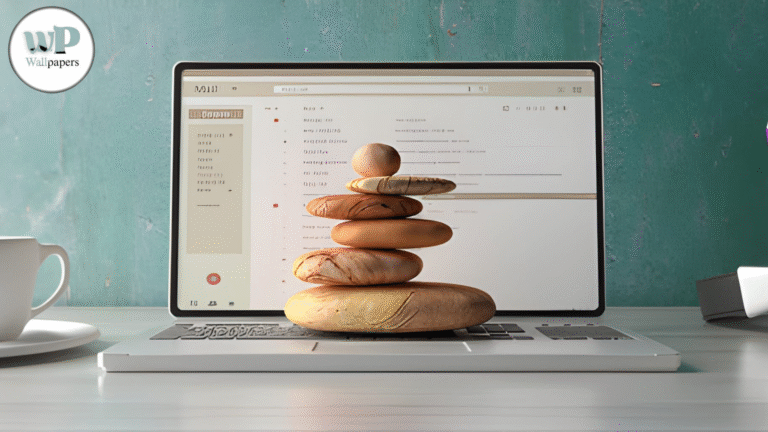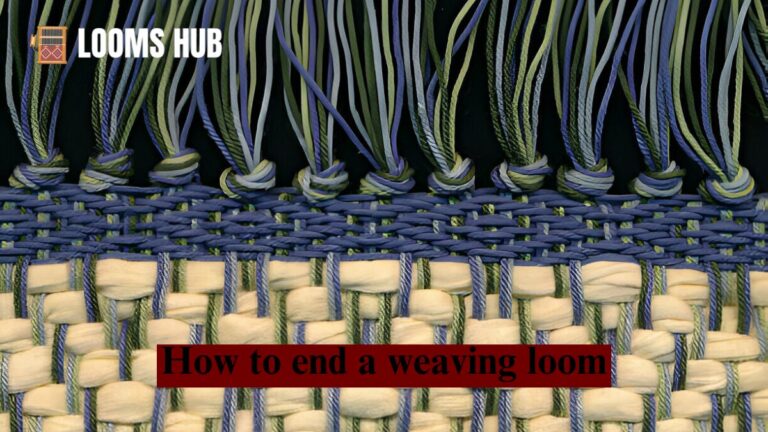Mini-weaving looms are becoming increasingly popular among crafters due to their versatility, portability, and the opportunity they offer to create beautiful woven pieces on a smaller scale. Whether you’re looking to experiment with new craft techniques or need a compact, manageable loom for smaller projects, mini looms fit the bill. This guide will provide a thorough exploration of mini-weaving looms, focusing on their types, materials, setup, and creative possibilities. Whether you’re new to weaving or an experienced artisan, you’ll find practical tips, creative inspiration, and detailed instructions for mastering the mini loom.
What is a Mini Weaving Loom?
A mini weaving loom is a smaller version of the traditional weaving loom, designed specifically for compact projects. These looms work by holding vertical warp threads taut, while horizontal weft threads are passed over and under them to create a woven fabric. What distinguishes mini looms is their portability, ease of use, and ability to produce small to medium-sized woven items like tapestries, coasters, and decorative textiles. Mini looms are perfect for beginners due to their straightforward functionality, yet they offer enough room for creative exploration with a variety of weaving techniques.
Despite their small size, mini looms come in various designs, from simple frame looms to rigid heddle looms, allowing weavers to experiment with texture, pattern, and color. These looms provide an accessible way to tap into the world of weaving without the space requirements or complex setup of larger looms. Check looms computer wallpaper.
Benefits of Using a Mini Weaving Loom
Mini looms offer numerous advantages that make them a favorite among weavers:
- Portability: These looms are small enough to be easily transported, so you can carry your weaving project wherever you go. Whether you’re traveling, sitting on your couch, or working at a park, you can take your mini loom along for the ride.
- Compact Design: The smaller size of mini looms means they don’t require a large crafting space. For people with limited space or those living in apartments, mini looms are a perfect solution.
- Beginner-Friendly: With fewer components and a simpler setup process compared to larger looms, mini looms are an excellent choice for those just starting in weaving. They allow you to learn the basics of warp and weft without feeling overwhelmed.
- Affordable: Because of their small size, mini looms are generally more affordable than full-sized looms. This makes them an attractive option for people who want to experiment with weaving on a budget.
- Versatility: Mini looms can be used for a variety of projects, from decorative tapestries and wall hangings to functional items like coasters, pot holders, and small bags. The versatility makes them an appealing tool for different craft enthusiasts.
Choosing the Right Mini Weaving Loom for Your Project
Different Types of Mini Weaving Looms
Mini looms come in several types, each suited to different weaving styles and projects. Here’s a breakdown of the most common types of mini looms:
Rigid Heddle Looms
A rigid heddle loom is a more advanced type of loom that features a fixed heddle to separate the warp threads, allowing the weft threads to be passed through. The heddle helps maintain consistent spacing between the warp threads and ensures that the weaving process remains even. These looms are popular for both beginners and intermediate weavers because they offer a good balance of simplicity and functionality. They allow you to create textured fabrics, such as woven scarves, small blankets, and decorative tapestries, while still being easy to use.
Frame Looms
The frame loom is perhaps the most straightforward type of mini loom. A rectangular or square frame holds the warp threads taut, and the weaver uses a shuttle to weave the weft thread over and under the warp. Frame looms are ideal for beginners, as they are simple to set up and use. With a frame loom, you can create a variety of items like wall hangings, woven bags, or small decorative pieces. Because of their simplicity, frame looms are a great starting point for someone learning how to weave.
Circular Looms
If you’re looking to create round woven pieces, such as coasters or circular wall hangings, a circular loom is the perfect choice. These looms are specifically designed to create circular woven projects. Circular looms are often used for smaller, decorative projects like woven jewelry, keychains, or round placemats. They are simple to use and create visually unique pieces, making them a favorite among many crafters who enjoy creating intricate circular patterns.
Nail Looms
The nail loom is a traditional style of loom that features a basic frame with nails hammered into it. The warp threads are then strung between the nails, and the weaver passes the weft threads over and under the warp. While it’s a simpler tool compared to others, the nail loom is incredibly versatile and allows for intricate designs. Nail looms are typically used for smaller items like woven ornaments, wall hangings, or even bracelets. They’re a great option for anyone interested in trying a more hands-on approach to weaving.
Factors to Consider When Choosing a Loom
When selecting a mini-weaving loom, it’s important to take several factors into account:
1. Size of the Loom
Mini looms come in various sizes, and the size of the loom will determine the size of the projects you can create. Smaller looms are ideal for quick projects like keychains, bookmarks, and small decorative pieces. Larger mini looms, on the other hand, can accommodate bigger projects, such as small scarves or woven wall hangings. If you’re unsure of what size to choose, consider the types of projects you plan to create and select a loom accordingly.
2. Material
Mini looms are typically made from different materials, including wood, plastic, and metal. Wooden looms are the most common, offering a natural look and feel that many weavers enjoy. They are sturdy, durable, and can be a beautiful addition to your craft space. Plastic looms, while not as aesthetically pleasing as wooden ones, are lightweight and affordable, making them a great choice for beginners or portable projects. Metal looms are the most durable but can be a little heavier. They’re often used for more advanced or professional-level weaving.
3. Ease of Setup and Use
Mini looms are generally easy to set up, but some come with additional features that make setup even simpler. For example, looms with built-in warp tensioners or pre-attached heddles can save you time and hassle. If you’re new to weaving, consider looms that include clear instructions or videos to help guide you through the setup process. Also, think about how much space you have for setting up the loom. Some looms require more space, while others can be worked on from the comfort of a small desk or table.
4. Type of Projects
The type of weaving project you want to create will also influence the loom you choose. If you’re interested in making larger woven pieces like tapestries, you might want to opt for a loom that can accommodate bigger projects, such as a rigid heddle loom. On the other hand, if you’re interested in smaller, decorative items like coasters or jewelry, a frame loom or circular loom might be more appropriate.
Tools and Materials for Mini Weaving
Essential Tools for Weaving
To make your mini weaving loom projects a success, you’ll need a few essential tools. These tools ensure that your weave stays tight, even, and properly constructed:
- Warp Yarn: Warp yarn serves as the vertical foundation of your woven piece. It holds the structure of your fabric and is typically made from a strong, smooth fiber like cotton, linen, or silk.
- Weft Yarn: The weft yarn is the horizontal thread that you interweave through the warp threads. It is what gives your piece its color, texture, and pattern. Weft yarn can be made from a variety of fibers, including wool, cotton, and silk.
- Shuttle: A shuttle helps carry the weft yarn across the warp threads. It makes weaving faster and easier by allowing you to pass the yarn over and under the warp quickly and evenly.
- Needles: Weaving needles are used to thread the yarn through the loom and help push the yarn into place. A good weaving needle should be smooth and long enough to handle multiple strands of yarn.
- Comb or Fork: This tool is used to compact the weft yarn after each row to make sure it is tightly packed and evenly spaced.
Types of Yarn for Mini Weaving
The type of yarn you choose has a major impact on the look and feel of your woven piece. Here’s an overview of the most common yarn types for mini-weaving:
- Cotton: Cotton yarn is one of the most popular choices for both warp and weft threads. It is strong, smooth, and easy to handle, making it perfect for beginners. Cotton also comes in a variety of colors and thicknesses, so you can choose the perfect yarn for your project.
- Wool: Wool is soft, fluffy, and elastic, making it ideal for textured woven pieces. It adds a cozy, plush feel to your fabric and is often used for creating blankets, scarves, and soft woven accessories.
- Linen: Linen is a more structured, durable fiber that creates a crisp, clean woven fabric. It’s often used for more refined or professional-looking pieces, such as table linens or high-end decorative items.
- Silk: Silk yarn adds a luxurious sheen to your woven pieces. It is smooth, shiny, and soft, often used for special woven pieces or delicate items that require an elegant finish.
Each yarn type has unique characteristics, so choose according to the texture, feel, and appearance you wish to achieve.
Step-by-Step Guide: How to Use a Mini Weaving Loom
Setting Up Your Loom
- Prepare the Warp Threads: Start by cutting the warp yarn to twice the desired length of your finished piece. Tie the warp threads securely at the top of the loom, ensuring they are spaced evenly apart.
- Secure the Warp: After attaching the warp threads to the top of the loom, tie them at the bottom to ensure that the threads are taut but not overly tight.
- Adjust the Tension: Keep checking the tension as you go, adjusting it as necessary. Tension is critical to achieving an even and consistent weave.
- Weave the First Row: Load the shuttle with the weft yarn and pass it over and under the warp threads, following the basic over-under weaving technique. Be sure to push each row tightly together to avoid gaps.
Tips for Smooth Weaving
- Maintain Even Tension: Consistent tension ensures an even weave. If your warp becomes too tight or too loose, your project may end up uneven.
- Keep the Shuttle Steady: As you pass the shuttle through the warp, ensure it’s not too loose or too tight. A steady hand will give your weave a smooth, uniform appearance.
- Use a Comb: After each row, use a comb or fork to press the weft tightly together. This will help your project stay neat and even as you continue weaving.
FAQs
1. What is a mini weaving loom?
A mini weaving loom is a small, compact tool designed for weaving fabric, threads, and other materials. It’s ideal for beginners, hobbyists, or those looking to create small, intricate woven designs such as coasters, bookmarks, or decorative pieces.
2. How do I use a mini weaving loom?
To use a mini weaving loom, start by setting up the warp threads (the vertical threads) on the loom. Then, weave your weft (horizontal threads) over and under the warp threads. Use a shuttle or your hands to pass the weft through, ensuring the design stays tight and consistent.
3. What materials can I use with a mini weaving loom?
Mini-weaving looms are versatile and can be used with a variety of materials, including yarn, thread, fabric strips, and even beads. Choose materials that are easy to work with and fit the size of your loom.
4. Can I create larger projects with a mini weaving loom?
While mini looms are designed for small-scale projects, you can still create larger pieces by weaving multiple sections and then joining them together. However, if you want to make larger woven pieces regularly, a larger loom may be more suitable.
5. What are the benefits of using a mini-weaving loom?
Mini-weaving looms are portable, beginner-friendly, and great for experimenting with different weaving techniques. They also provide a hands-on way to explore textile art and are an excellent choice for small projects or quick craft sessions.
6. Where can I buy a mini weaving loom?
You can find mini weaving looms in craft stores, online marketplaces like Amazon, and specialized stores that sell weaving tools. Be sure to read reviews to choose a loom that suits your needs and budget.
7. Is a mini weaving loom suitable for beginners?
Yes, mini-weaving looms are perfect for beginners. They are simple to use and allow you to practice basic weaving techniques without feeling overwhelmed by the size or complexity of larger looms.
Conclusion
A mini-weaving loom is a fantastic tool for anyone looking to explore the world of weaving. Whether you’re a beginner eager to learn or an experienced crafter seeking a compact loom for small projects, the mini-weaving loom offers flexibility, portability, and creative potential. With various materials and techniques at your disposal, it’s easy to create unique, handcrafted pieces that reflect your style. Whether for fun, relaxation, or as a stepping stone into more advanced weaving projects, the mini weaving loom is a great addition to any crafting toolkit.




